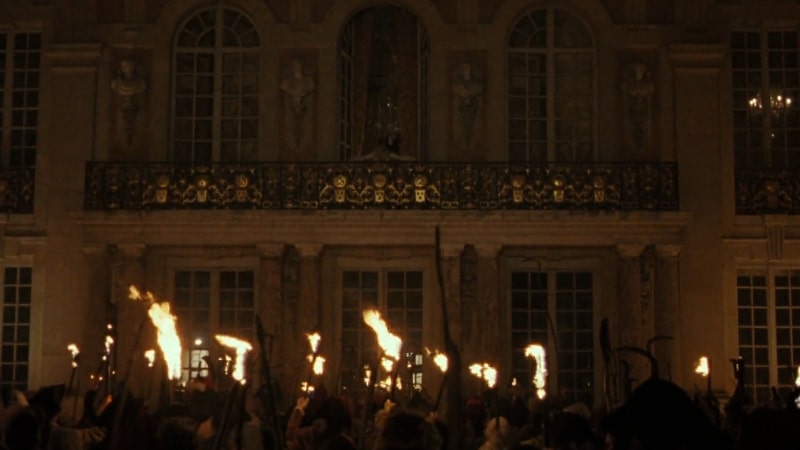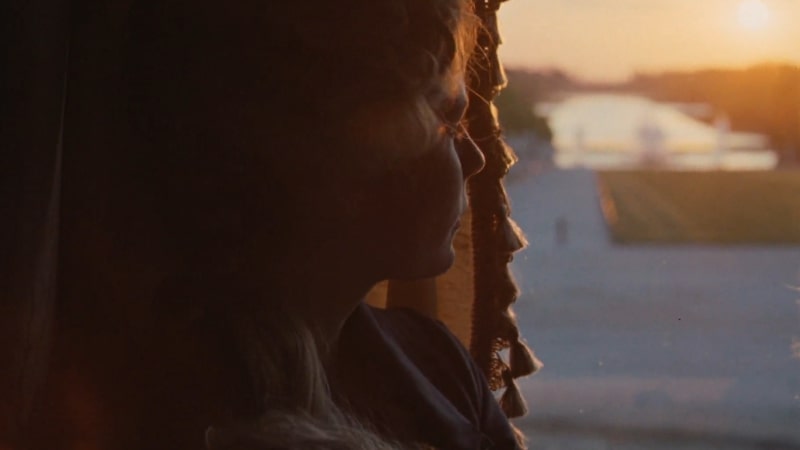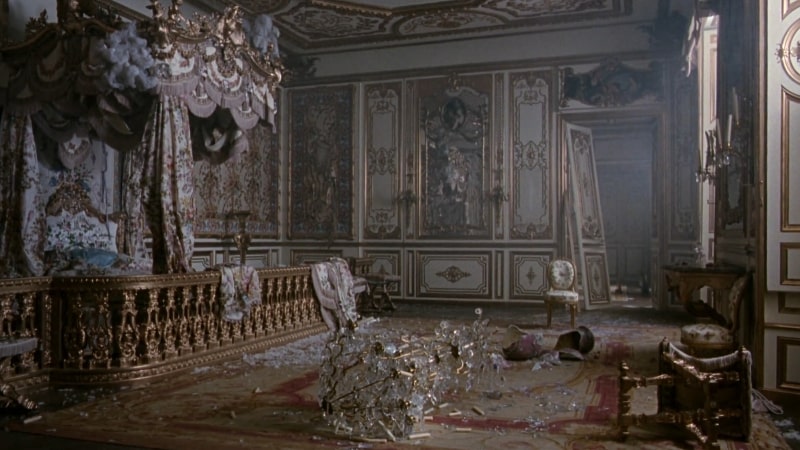Ending Explained is a recurring series in which we explore the finales, secrets, and themes of interesting movies and shows, both new and old. This time, we parse through the historical and aesthetic implications of Sofia Coppola’s Marie Antoinette.
If you go into Sofia Coppola‘s millennial pink, pop-music-soundtracked biopic of Marie Antoinette with any prior knowledge of the last Queen of France, it’s probably of her death. That and the line about cake.
But what Coppola establishes with the film’s first image is that any sense of context you have leftover from history class will not help you here. In between the opening credits of 2006’s Marie Antoinette, as the guitar riffs from “Natural’s Not In It” by the post-punk band Gang of Four is played, there’s a brief shot of Kirsten Dunst‘s title character. She’s lounging with a servant tending to her as she licks frosting off her finger. Marie breaks the fourth wall and slyly cocks her head as if to ask the viewer, “What? Were you expecting a documentary?”
Over the next two hours, the film chronicles the fourteen-year-old archduchess’s marriage to the heir apparent Louis XVI (Jason Schwartzman) as a unification between their countries of Austria and France, her eventual ascent to the throne, and her antics as the Queen. The film wears its anachronisms on its silk sleeves — contemporary music and Converse sneakers being some of the most noteworthy examples. These incongruities were expertly assessed by Roger Ebert, who noted that “Marie seems to think she is a teenager living in the present, which of course she is.”
To the character, she is living in her moment, and Coppola seems to have spared no expense in capturing Marie’s indulgences in all the fineries that French aristocracy has to offer. But Marie is also deeply lonely, even if she’s never alone. Her husband is disinterested in her and her court never fully forgives the outside allegiances that her Austrian blood betrays. No matter how upbeat the film’s tone may be at times, it is consistently sympathetic to Marie, and no amount of music from The Strokes can overcome the existing knowledge that, sooner or later, this queen will be beheaded in a revolution.
This brings us to the film’s finale. The people of France have stormed the Bastille and begun gathering outside Versailles, the royal residence. Marie steps onto her balcony and lowers her head onto the railing, a symbolic gesture that foreshadows her death. It quiets the rioters, but only briefly. It’s also an acknowledgment that extends to those in the audience watching with a morbid curiosity about how, if at all, Coppola may decide to telegraph Marie’s bloody demise.

But this symbolism is the closest thing we get to an image of Marie in the guillotine. Marie Antoinette ends with Marie and her family leaving the palace as the sun rises. In accordance with a film that mostly allows Marie to live in the now, it’s only fitting that, just as she does not know where she is being taken, there is no exposition to explain this to us. Instead, as Marie turns to glimpse Versailles for one last time, she comments that she is saying goodbye. This home has been at once a palace and a prison and a playground, and she intuitively understands this parting image will be her last.

This is also where the film almost ends. Almost. Just as Marie Antoinette opens with a brief tableau, it ends with one, too.
But first, it might help to know what Coppola leaves off the screen. In real life, the French Revolution began in 1789. That same year, Louis XVI, Marie, and their family left Versailles and moved to Tuileries, a palace in Paris. At one point, they tried to escape but were captured and returned. In 1792, the royals were imprisoned and the monarchy was abolished. In early 1793, as the Reign of Terror swelled, Louis was executed by guillotine, and in October of the same year, Marie was tried for treason and also beheaded.
But none of this is relayed in the film, not even with a final title card that provides any historical information. Instead, the final image is that of Marie’s bed-chamber after it has been ransacked by rioters. On the level of historical fact, it tells us almost nothing about the revolution that we have not already inferred. But in a much more significant way, this single shot encapsulates so many of Coppola’s thematic interests.

Throughout the film, the idea that Marie’s entire world is her palace is repeatedly underlined. In terms of plotting, very few sequences take place outside of Versailles. But even beyond that, costumes and set design often reassert the visual connection between the two. Marie’s elaborate floral dresses camouflage her with the similarly patterned wallpaper. Her white nightgown blends into her white bedspread when she’s greeted in the morning — an image that simultaneously frames the young queen as angelic and mocks the implications of her purity in an unconsummated marriage while Marie is ridiculed for not having produced an heir. At other times, Marie’s costuming allows her to stand out. At dinner with her husband, the gulf between them is emphasized by her vibrant dress, pink as a raspberry macaron, and his much more muted palette.

The final shot is the other shoe dropping on these images. Just as her decadent life was reflected in the opulence of her surroundings, so too is her impending doom reflected in the devastation of her former home. It’s also, in fitting with one of Coppola’s greatest strengths as a filmmaker, devastatingly sad in its simplicity. As beautiful as Versailles is (especially as Coppola was given unprecedented access to film there), it’s tragically hollow that this is all there is to show for a life lived there. The film has sympathetically given us pieces of Marie’s life, her joys, and her sorrows, but all that is left at the end is a plundered bedroom.
When Marie says goodbye to her palace, she doesn’t know about the future ahead of her. She doesn’t know of her eventual imprisonment and trial. She doesn’t know that one day she will be carted through the streets of Paris and then publicly executed. She certainly doesn’t know what her legacy will be. She only knows at that moment that her security has been breached and the finality of this. As Coppola sees it, for better or worse, Marie was the world that other people had built for her. We only need to see the destruction of one in order to understand the implication of the other. Seeing both would be unnecessary. And for once, in this regard, perhaps there’s no need to overindulge.


0 comments:
Post a Comment